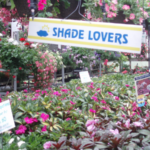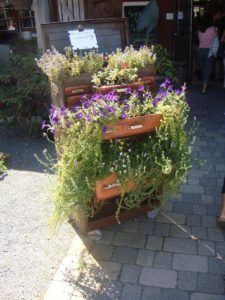Pots, Planters & Statuary: What’s Next in Containers
From what I can gather, making a decision between the lighter weight materials and the heavier ceramic, plaster and such is not really the main concern when it comes to consumers choosing pots, planters and statuary. As discouraging as it is, the reality is that, as with so many other things in today’s society, price is what dictates the purchase. To equate the heavier materials with high quality and price and the lighter weight materials with low quality and price (and therefore undesireable) is inaccurate. Stoneware pots are often cheaper than some of the high-tech “foam” pots. So in a category that seems upside down, how do you know which materials to stock?
Container Trends
Working for BWI Co. in Greer, S.C., division sales manager Gerry Kolb has had the opportunity to observe the trends in the container industry in his part of the country. “If you look at the urban gardener setting, like patios, condos and decks,” said Kolb, “those folks are not looking for containers that they will need to drag up the elevator or stairs. Garden centers in Alabama are building containers made of only shrubs.” A shrub container, something that would remain outside and truly blend into the landscape, would be ideal for urban dwellers wanting to achieve a more natural setting.
“What we are seeing as general trends from the nursery centers are a lot more color containers, as opposed to black, and more logs and specialty items,” said Gene Brogdon, Southeastern sales-territorial manager, of Nursery Supplies, Inc. “Many of our customers are trying to branch out and get into more specific, more value-added products, more branding a trend that I think we are going to see more of in years to come.” Garden centers are even starting to see pot manufacturers try to brand themselves, a la New England with its specialized fixtures and POP.
But the real revolution in containers has come in materials. The former standard barer in pottery, terra cotta, is loosing substantial ground to more upscale ceramics, imported pottery and high-tech “foams.” This last group, probably the most exciting, is revolutionizing the way we think about containers. Faux is in, and in big. The newest resin, styrin and foam containers have been colored, formed and finished to look exactly like their terra cotta and ceramic counterparts, and it’s often hard to tell the two apart until you actually touch them. Quality like this doesn’t come cheap, and the prices on the best new faux containers often rival that of glazed pottery. What’s better is that women love the new faux pots because they are so much lighter and easier to move.
Time Investment
Independent garden centers, like any business, never have enough time to do everything they would like to upkeep their facility. The same goes for their consumers who don’t have the time to do as much gardening as they would like. In essence, neither one has the time to wash down all their pots and keep them clean of dirt, scum or algae, so using lighter weight materials is not only a convenience in weight or money, but also in the care and maintenance of their outdoor living area.
“For higher-end houses of mid-America, part of [container purchasing] is price point and part is maintenance,” Kolb said. “Can they hose it off, scrub it typical dust and dirt can be hosed off, but on ceramics the ultraviolet light works on them and the shine gets dull.” Perhaps consumers are selecting containers based on their own experience of what they will be able to keep clean and what will ensure a long-lasting high-quality appearance.
When it comes to their corporate accounts, manufacturers hear over and over that time is the key factor what will stay clean the longest and take less time to clean when dirty. “The [containers] we are selling to [landscapers and shrubbery contracts] varies; some try to take the time to clean them and some don’t,” Brogdon said. “But I don’t really know of anyone who takes the extra time to do any extensive cleaning.”
Something for everyone
Instant gratification, a familiar topic in the lives of most Americans, gives rise to a growing market of container gardening. And container gardening is being supported not only by consumer popularity, but the manufacturers as well. Their constant search for new materials, glazes and shapes is a big part of the ongoing excitement of containers. Because of this, container gardening, unlike many trends, will always have its place in the gardening realm. As far as the debate goes for heavier and lighter weight materials, there seems to be a place for everything; the more choices and options concerning price point, availability and appearance, the more people will be able to achieve instant gratification.


















 Videos
Videos





